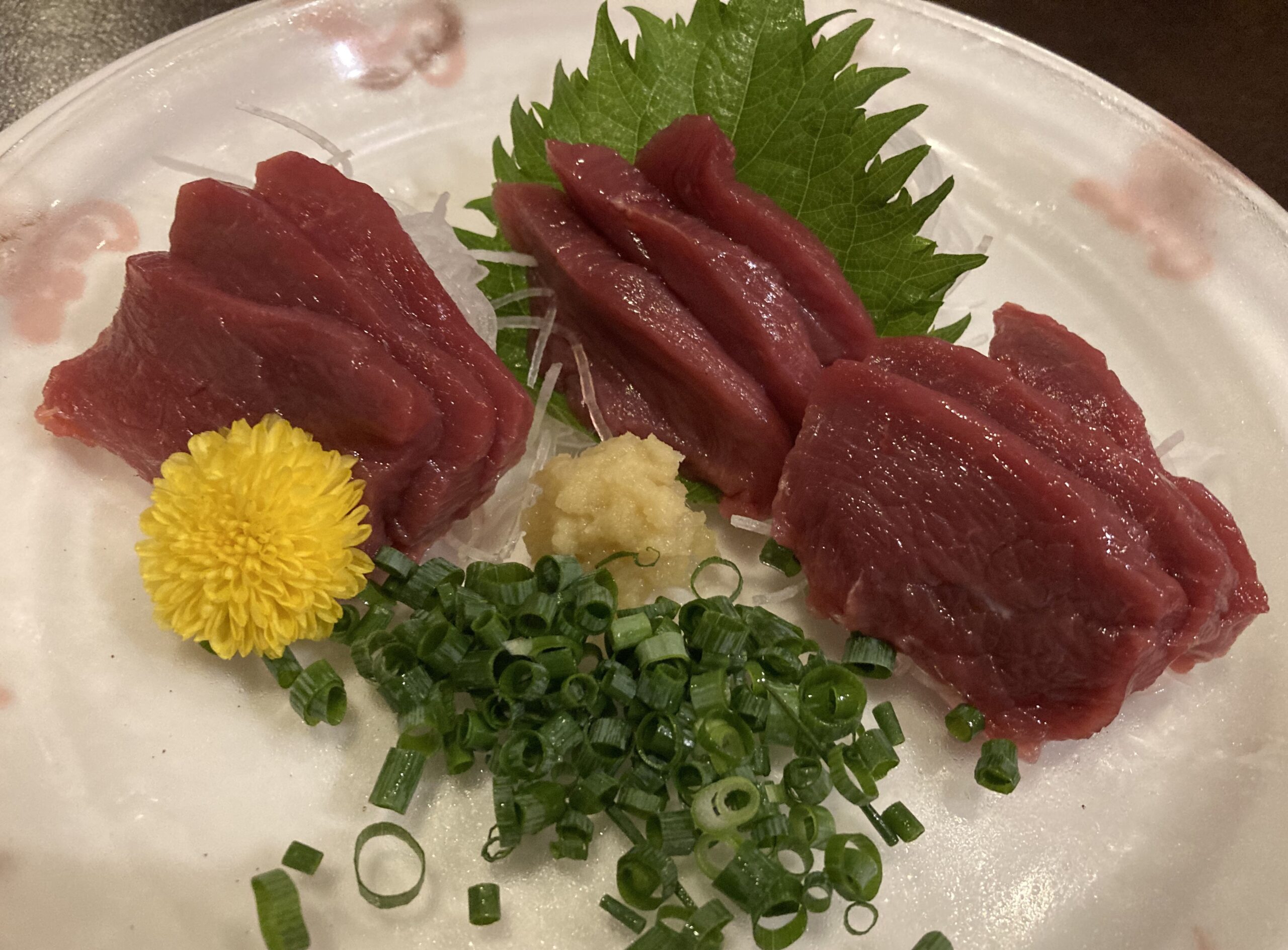本ブログは観光業、企業接待、留学生対応等で英語案内が必要ながら、多忙で準備に時間をかけられない方々の為にすぐに使える情報を分かりやすく解説しています。👉『これは何?』シリーズでは一般的な訪日外国人に興味のない情報(地名、名前、年代、専門用語等)は極力抑えて、相手の関心に合わせた英語説明力アップを目指していますので、詳細で高度な表現をお求めの方は各種公式or専用サイトをご参照下さい。
今回は商談で訪日中の重要顧客と移動中のタクシーから見えた飲食店の看板の「馬刺し」について一体何かを聞かれ、その僅かの間に、できるだけ腑に落ちる回答をしたいシチュエーションです。
一般的に多くの訪日外国人は『食べ物』『アート』『建築(匠)』『ファッション』『日本人』に高い関心があると言われますので、それらの視点に立って、より口頭で短く、わかりやすくお伝えして、ぜひ「馬刺し」を体験してみたい(行って食べてみたい)と思わせたいですよね。
1. この一言で腑に落ちる?
このパートのいずれかのワンフレーズでご納得いただけたらラッキーですね。もしだめなようでしたら、次のパートもお試しください。いつも通り、日本語で言えないことは英語でも言えませんので、日本語>英語順でご紹介します。
1.1 高級魚や和牛にない独特の柔らかさ&甘み?

- 馬刺し(ばさし)は、生の馬肉を使った伝統的な日本料理で、主に馬の飼育が盛んな地域で食べられてきました。通常は、薄切りの玉ねぎ、おろし生姜、にんにくなどの薬味と一緒に出され、甘口の醤油につけて味わいます。高級な魚や和牛にもない独特のやわらかさとほんのりとした甘みは、日本での旅の中でも特に印象深い味の思い出になるかもしれません。
- This is called basashi—horse sashimi—a traditional Japanese dish made from raw horse meat, typically eaten in regions where horses were raised. It’s usually served with thinly sliced onion, grated ginger, garlic, and other garnishes, and enjoyed with sweet soy sauce for dipping. Its unique tenderness and subtle sweetness, unmatched even by premium fish or high-grade Wagyu beef, may become the most unforgettable flavor of your visit to Japan.
- 👉先ずはオーソドックスな基本的特徴(主に味覚に訴える表現)でのご紹介パターンから。相手の反応に合わせて段階的に使える様に3文に分けました。
1.2 旅の疲れを癒す低脂肪&低カロリーの強壮食?
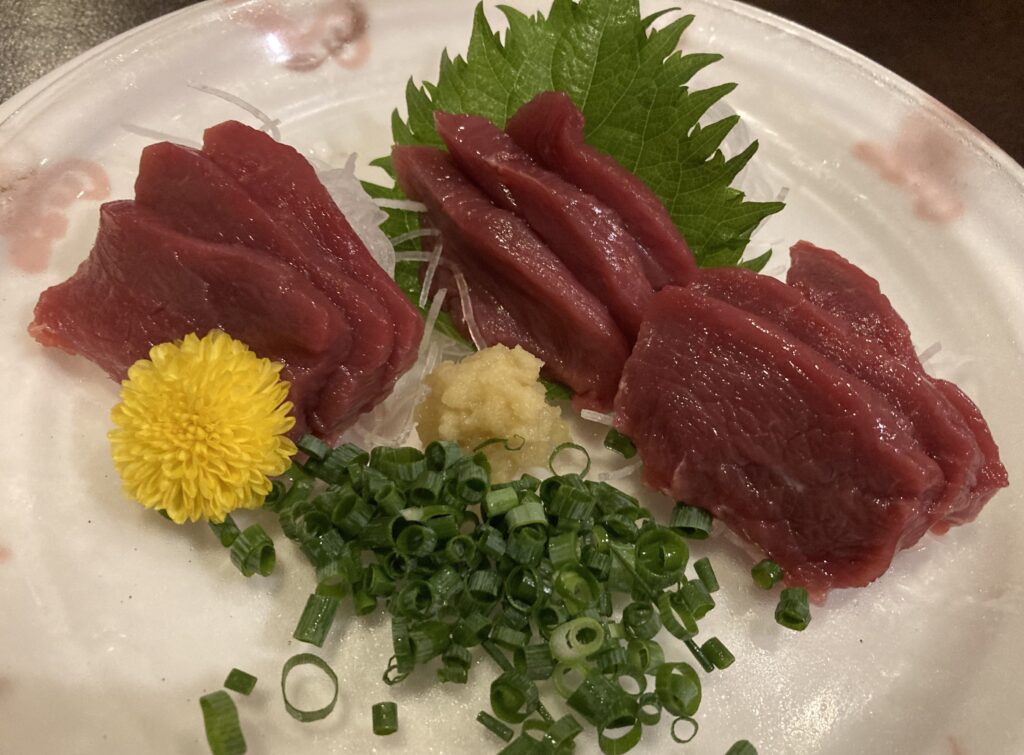
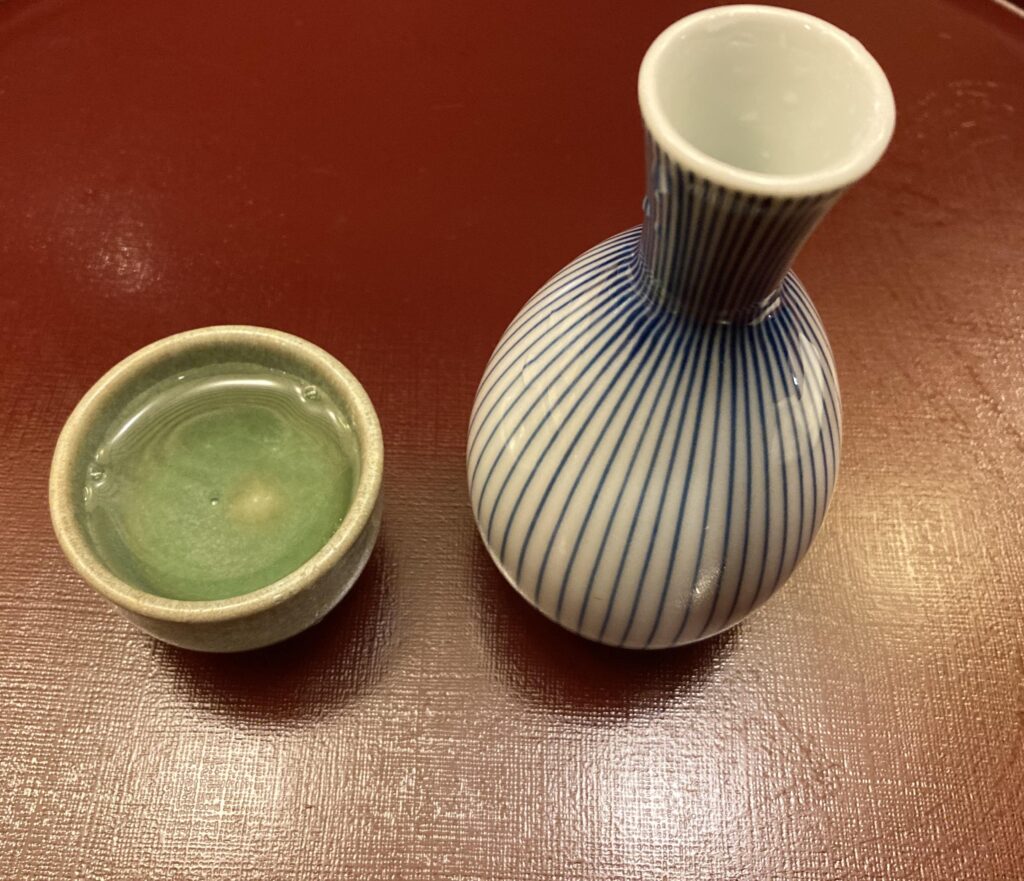
- 馬刺し(バサシ)は、酒好きに人気の一品で、薄くスライスした生の馬肉を皿に盛り、お好みの醤油や薬味につけて、まるで魚の刺身のように楽しむ料理です。高たんぱく・低脂肪・低カロリーで、鉄分などのミネラルも豊富な馬肉は、古くから栄養価の高い強壮食として親しまれてきました。旅で疲れた体を癒やしながら、馬刺しと日本酒の絶妙な味わいを堪能してみてはいかがでしょう。
- Basashi, or horse sashimi, is a popular dish among drinkers—thinly sliced raw horse meat served on a plate, typically enjoyed with your favorite soy sauce and condiments, much like raw fish sashimi. High in protein, low in fat and calories, and rich in minerals like iron, horse meat has been consumed for centuries as a nutritious tonic. It’s a delicious way to pair bold flavors with sake while recharging your energy after a long day of exploring Japan.
- 👉ここでは味の他に健康面、旅疲れ癒しメリットも訴えてみました。お酒好きだけど、ヘルシー系インバウンド向けに!
2.次の補足でご納得?
残念ながら前パートで外した場合のフォローセリフ、いつも通りインバウンド視点を踏まえ関心別に置いてみました。また全体的にかなり長くなってしまいましたので、お気に入りのフレーズあれば現場でも試してみる、そんな軽いノリでご利用ください。
2.1 建築(匠:たくみ)系
👉伝統的建築美を観ながらの馬刺しには要注意?
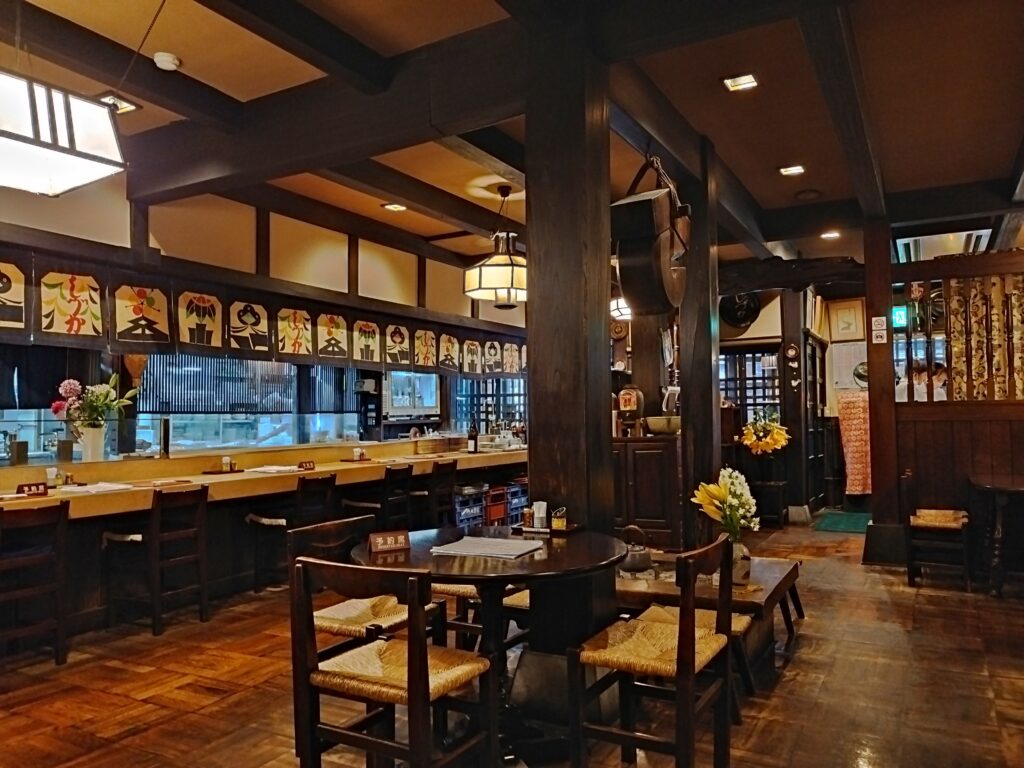

- 馬刺しが食べられる多くの地域には、今もなお城や武家屋敷が当時のまま残っています。そうした伝統的な建築を目で楽しみながら散策した後の夕暮れ時には、地元の居酒屋で馬刺しを舌で堪能するのも格別です。中には、昔ながらの建物を利用した居酒屋もあり、職人技が光る美しい内装とともに美味しい馬刺しを味わえます。ただし、あまりに見事な内装に目を奪われて、肝心の味がおろそかにならないようご注意を!
- In many areas where horse sashimi is served, you’ll still find well-preserved castles and samurai-era streets. After strolling through these historic sights and taking in the traditional architecture with your eyes, you can savor horse sashimi with your taste buds at a local tavern. Some of these taverns are even housed in traditional buildings themselves, offering not only delicious basashi but also a feast for the eyes with their intricate, artisan-crafted interiors. Just be careful—don’t let the beautiful decor distract you from the exquisite flavors on your plate!
- 👉具体的に聞かれたら熊本、松本、高山、福島あたりでググってあげてくださいね。
2.2 ファッション系
👉馬刺しには濃い色のハンカチ持参がお勧め?何故?
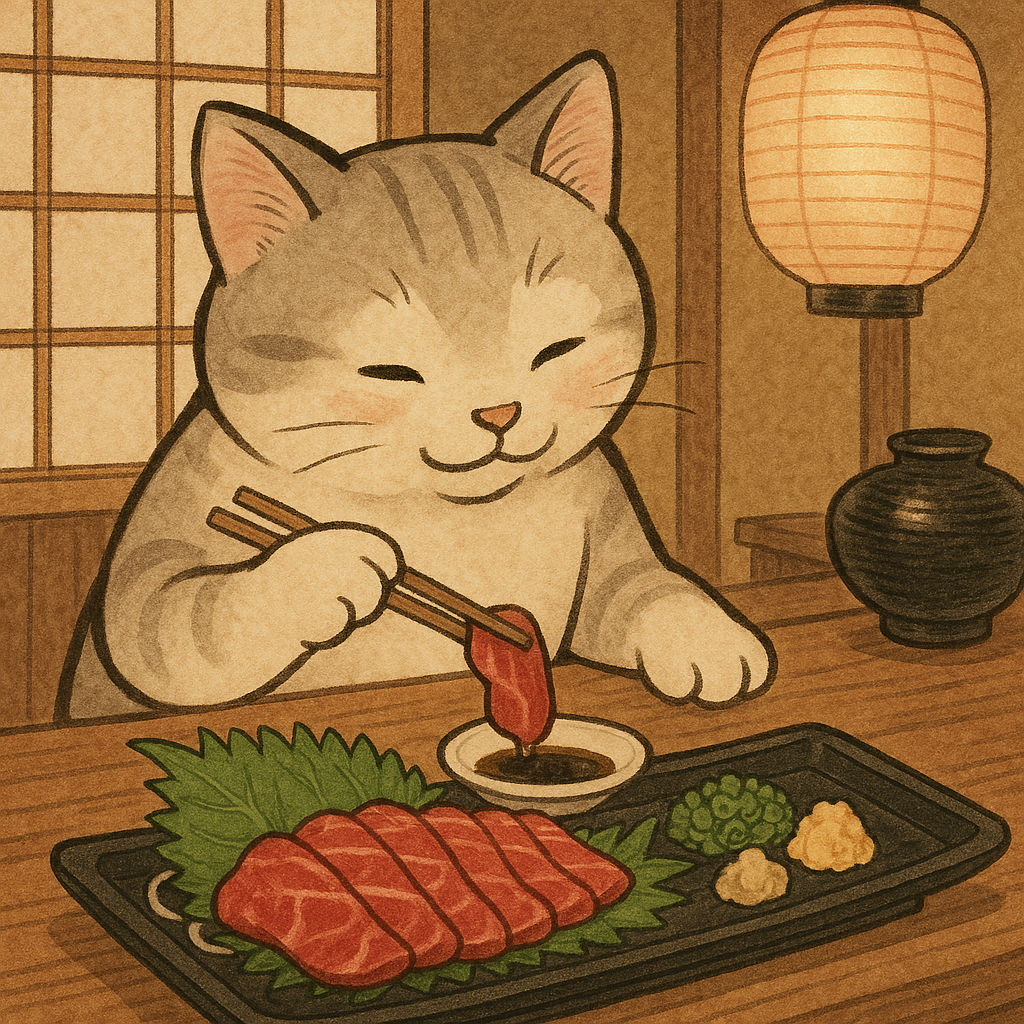
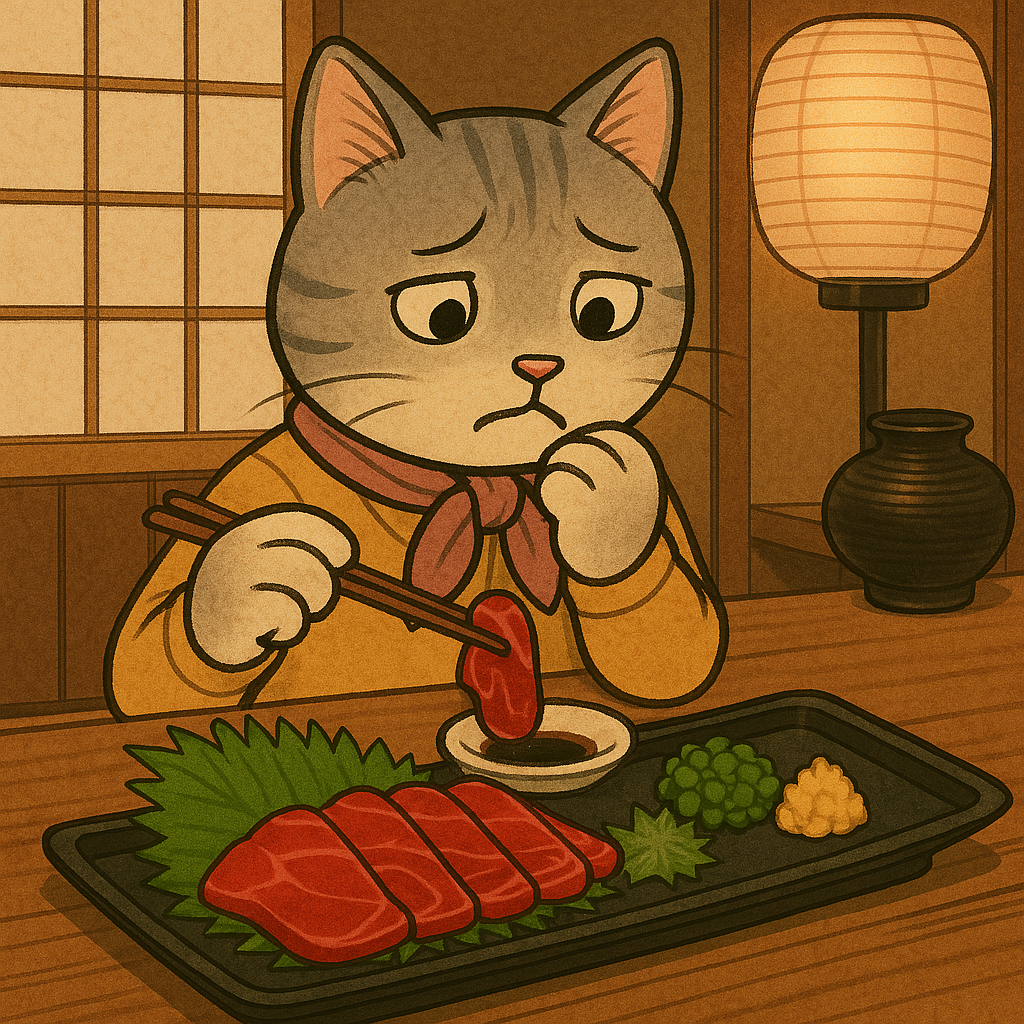
- 馬刺しを提供するお店が、古民家を改装した空間にあるなら、”日本らしい”雰囲気の中で写真を撮る絶好のチャンスです。障子や提灯、漆器などの伝統的な和のインテリアと組み合わせて、さまざまなパターンの写真が楽しめます。ただし、撮影に夢中になりすぎて、馬刺しの醤油を服に垂らさないよう注意しましょう。すべてを満喫するために、濃い色のハンカチを一枚持っていくのもおすすめです。
- If the restaurant serving horse sashimi is housed in a converted traditional home, it’s the perfect chance to snap photos with a uniquely Japanese atmosphere. Surrounded by elements like shoji screens, paper lanterns, and lacquerware, you can play with a variety of aesthetic patterns and compositions. But don’t get too caught up in the photo ops—watch out for soy sauce drips from the basashi! To enjoy the full experience without worry, bringing a dark handkerchief might be a smart move.
- 👉今回は自らの苦い体験も含めてまとめてみました。
2.3 アート系
👉芸術的な盛り付けは貴方の美的センスが邪魔をする?



- 皿の上に美しく盛りつけられた馬刺しは、まるで生け花や水墨画を思わせるような、日本独自の美意識を感じさせてくれます。赤身と白い脂のコントラスト、薬味の紫蘇やねぎ、生姜、にんにくなどが彩る緑や黄色、そしてそれらを引き立てるような器との組み合わせは、一枚の絵画のような完成度です。あまりの美しさに食べるのがもったいない——けれど、同時に食欲を抑えきれないという、なんとも悩ましいジレンマに心が揺れるかもしれません。
- The artful presentation of horse sashimi on the plate evokes a distinctly Japanese aesthetic, reminiscent of ikebana flower arrangements or suiboku-ga ink paintings. The contrast between the deep red of the meat and white marbling, set against the vibrant greens and yellows of condiments like shiso leaves, green onions, ginger, and garlic, creates a composition that resembles a painting—carefully balanced atop a thoughtfully chosen plate. And yet, this visual harmony may stir a delicious dilemma within you: the desire to preserve its beauty clashing with the irresistible urge to savor it!
- 👉今回は馬刺しの視覚表現(色と素材)を織り込むため長くなりましたが、もちろん(食べたくて)待ちきれないお相手なら最初の1文でもOKでしょう。
2.4 フード系
👉 馬刺しで貴方のグルメ度と何が試される?
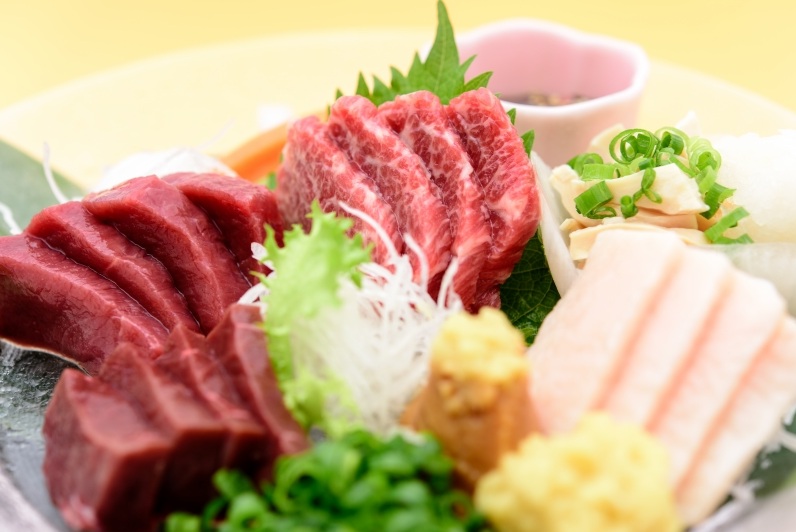
- 馬刺しは、魚の刺身特有の生臭さが苦手な方にもおすすめできる料理で、“まったく匂いがない”と言われることもあります。人気の部位は、霜降りのロースや、あっさりとしたフィレやモモなどの赤身で、高級なマグロを思わせるようなやわらかさと甘みが特徴です。たてがみの下にある皮下脂肪の部位『コーネ』は、脂とは思えないほどのコリコリとした食感が魅力で、多くのファンを魅了しています。さらに、グルメ通の中には、このコーネと赤身を重ねて食べることで味わいが倍増すると勧める人もいます。ただし、味も倍なら、お値段も倍になることをお忘れなく。
- Horse sashimi is also a great option for those who are sensitive to the raw smell of fish, as it’s known for having virtually no odor. Among the most popular cuts are marbled varieties like loin, and lean cuts like fillet and thigh, prized for their delicate tenderness and sweetness reminiscent of premium tuna. One particularly distinctive part is the subcutaneous fat from beneath the mane—known as ‘cornet’—which has a surprisingly crisp texture that defies its fatty nature and has earned a devoted following. For a gourmet experience, some connoisseurs recommend layering the cornet with lean red meat to amplify the flavor. Just keep in mind: the taste may double, but so does the price!
- 👉今回テーマ自体がフードネタなのでグルメインバウンドを想定して少し深掘りした表現を織り込んでみました。コーネは簡単に「首の下の脂肪」と伝えることも可と思います。
2.5 日本人系
👉日本人最愛の「さくら」の名を関した馬刺しってどんな?


- 馬肉は、その鮮やかな赤みを帯びたピンク色から、“桜肉”という優美な呼び名でも知られています。しかしこの呼び名は、仏教の影響により1,000年以上にわたり肉食がタブーとされていた時代に、人々が密かに肉を食べるために生まれた隠語のひとつとも言われています。同様に、イノシシは『山くじら』、シカは『紅葉(もみじ)』、鶏肉は『かしわ(柏)』と呼ばれていました。けれど、日本人に最も愛されている桜の名を冠した馬肉の味、気になりませんか?ひとくち味わえば、日本人の文化や感性を、舌を通してより深く、鮮やかに感じられるかもしれません。
- Horse meat, with its vivid reddish-pink hue, is poetically known as ‘sakura meat’—cherry blossom meat. However, it’s also said that this elegant name was originally a kind of coded language that emerged in pre-modern Japan, when meat consumption was taboo for over a thousand years due to Buddhist influence. Other examples of such euphemisms include wild boar as ‘mountain whale,’ deer as ‘maple leaf,’ and chicken as ‘kashiwa’—oak leaf. But aren’t you curious what horse meat tastes like, to have earned a name inspired by Japan’s most beloved flower? With just one bite, you might find yourself understanding Japanese culture in an entirely new, flavorful way.
- 👉今回もできるだけ色々な表現に触れられるように、日本人ネタは長くなりましたが、さくらの隠語表現は、実際現場でも使えるネタですので、ここでは他の隠語も意欲的な方向けに織り込んでみました。
👉 Glossary(便利用語集)
おろしショウガ☛grated ginger!ニンニクとその他付け合せ☛garlic and other garnishes!condiments☛薬味!a nutritious tonic☛滋養強壮剤!recharging one’s energy☛エネルギーを充電する!with your taste buds☛あなたの舌で! at a local tavern☛地元の居酒屋で!a feast for the eyes ☛目の保養!the beautiful decor☛美しい内装! the exquisite flavors☛絶妙な味わい!white marbling☛白い霜降り!the irresistible urge ☛抑えきれない衝動!having virtually no odor☛臭いがほとんどない!marbled varieties like loin☛ロースなどの霜降り系!lean cuts like fillet and thigh☛ヒレ肉やモモ肉などの赤身!the subcutaneous fat☛皮下脂肪!the mane☛たてがみ!to defy its fatty nature☛その脂肪質と異なる!a devoted following☛熱烈なファン!some connoisseurs☛一部の愛好家!
御礼&後書き☞
お忙しい中、今回も最後までご覧いただき大変ありがとうございました。今回テーマ含め今後も定期的にブラッシュアップして参りますので、引き続きご参照のほど宜しくお願い致します。🔶Gold🔶R70629.v.7b.7b.7b/+
